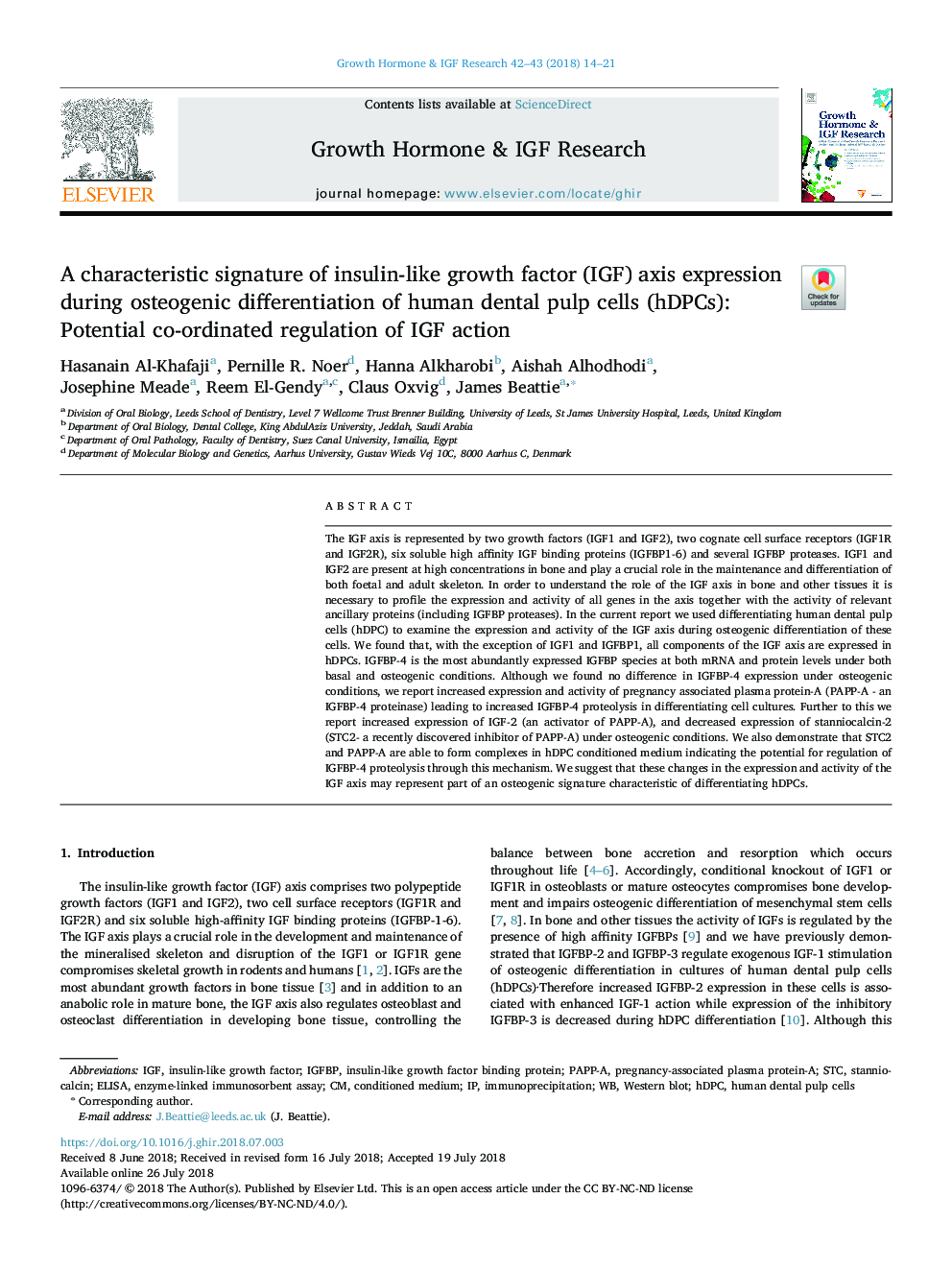| کد مقاله | کد نشریه | سال انتشار | مقاله انگلیسی | نسخه تمام متن |
|---|---|---|---|---|
| 8631596 | 1568939 | 2018 | 8 صفحه PDF | دانلود رایگان |
عنوان انگلیسی مقاله ISI
A characteristic signature of insulin-like growth factor (IGF) axis expression during osteogenic differentiation of human dental pulp cells (hDPCs): Potential co-ordinated regulation of IGF action
دانلود مقاله + سفارش ترجمه
دانلود مقاله ISI انگلیسی
رایگان برای ایرانیان
کلمات کلیدی
IGFSTCIGFBPPAPP-AstanniocalcinImmunoprecipitation - تخریب ایمنیELISA - تست الیزاEnzyme-linked immunosorbent assay - تست الیزاHuman dental pulp cells - سلول های پالپ دندان انسانConditioned medium - شرایط محیطیInsulin-like growth factor - فاکتور رشد مانند انسولینWestern blot - وسترن بلاتpregnancy-associated plasma protein-A - پروتئین A-پلاسمای مرتبط با بارداریinsulin-like growth factor binding protein - پروتئین اتصال دهنده به عامل انسولین مانند
موضوعات مرتبط
علوم زیستی و بیوفناوری
بیوشیمی، ژنتیک و زیست شناسی مولکولی
علوم غدد
پیش نمایش صفحه اول مقاله

چکیده انگلیسی
The IGF axis is represented by two growth factors (IGF1 and IGF2), two cognate cell surface receptors (IGF1R and IGF2R), six soluble high affinity IGF binding proteins (IGFBP1-6) and several IGFBP proteases. IGF1 and IGF2 are present at high concentrations in bone and play a crucial role in the maintenance and differentiation of both foetal and adult skeleton. In order to understand the role of the IGF axis in bone and other tissues it is necessary to profile the expression and activity of all genes in the axis together with the activity of relevant ancillary proteins (including IGFBP proteases). In the current report we used differentiating human dental pulp cells (hDPC) to examine the expression and activity of the IGF axis during osteogenic differentiation of these cells. We found that, with the exception of IGF1 and IGFBP1, all components of the IGF axis are expressed in hDPCs. IGFBP-4 is the most abundantly expressed IGFBP species at both mRNA and protein levels under both basal and osteogenic conditions. Although we found no difference in IGFBP-4 expression under osteogenic conditions, we report increased expression and activity of pregnancy associated plasma protein-A (PAPP-A - an IGFBP-4 proteinase) leading to increased IGFBP-4 proteolysis in differentiating cell cultures. Further to this we report increased expression of IGF-2 (an activator of PAPP-A), and decreased expression of stanniocalcin-2 (STC2- a recently discovered inhibitor of PAPP-A) under osteogenic conditions. We also demonstrate that STC2 and PAPP-A are able to form complexes in hDPC conditioned medium indicating the potential for regulation of IGFBP-4 proteolysis through this mechanism. We suggest that these changes in the expression and activity of the IGF axis may represent part of an osteogenic signature characteristic of differentiating hDPCs.
ناشر
Database: Elsevier - ScienceDirect (ساینس دایرکت)
Journal: Growth Hormone & IGF Research - Volumes 42â43, OctoberâDecember 2018, Pages 14-21
Journal: Growth Hormone & IGF Research - Volumes 42â43, OctoberâDecember 2018, Pages 14-21
نویسندگان
Hasanain Al-Khafaji, Pernille R. Noer, Hanna Alkharobi, Aishah Alhodhodi, Josephine Meade, Reem El-Gendy, Claus Oxvig, James Beattie,